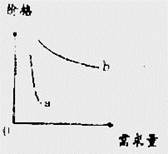就给定资料所反映的主要问题,用1000字左右的篇幅,自拟标题进行论述。要求中心明确,内容充实,论述深刻,有说服力。
参考答案:
解析:是“择校费”,还是“歧视费”
日前,重庆市政府将“择校费”合法化,并为其制定了标准。不同学校收取不同的费用,市属市级重点中学或示范性高中,每个学生每学期收取的择校费不高于5000元,区县属市级重点中学不高于4000元,其他普通高中不高于1500元。重庆这个明码规定“择校费",在全国尚属首次。但我以为,这个公开透明的规定,却隐含着不可忽视的歧视因素。
政府用文件形式规定“择校费”合法,根据不同等级确定不同数额的收费,这就意味着政府利用“择校费”的形式倡导歧视。所谓重点中学或示范性高中,大多数是政府教育投入的重点,无论是资金还是师资,都给予了长期的、很大的倾斜,而普通中学则不然,不具备这些优势。“择校费”的规定,将进一步拉大重点学校和普通学校的差距,使本来就不均衡的教育资源更加不均衡。
这种做法也是对学生的歧视。重点学校不一定将每个学生都培养成才,普通学校也不一定培养不出杰出人才。但来自政府的权威性文件,无疑强化了学生与家长的不良心态,给学生增加了无形的压力。一线教师都知道,一些学生因未上重点而自暴自弃,而“择校费”明码标价的做法,会强化这种心态。
重点学校的优势地位,必将会使普通学校竞相争取成为“重点”、“示范”校,并因此而开展无视教育规律的竞争。有的城市三四十所中学,竟然有十几所是重点;学校为了大考成绩排名在前,制造虚假成绩上报。“择校费”的用途,不是谁能规定、监督得了的。今年重庆“两会”上,不少人大代表、政协委员对“择校费”提出了尖锐批评,指出“择校费”就是“教育贿赂”-现在难道还要用文件的形式确定“贿赂标准”吗还应当看到,这种歧视会严重伤害另一部分人的利益。当前的民工子女,无论读哪一所学校(初中、小学)都是借读,而“择校费”标准的出台,有可能加大民工子女的就读费用。

